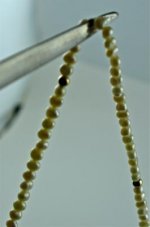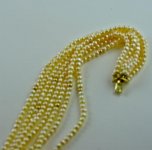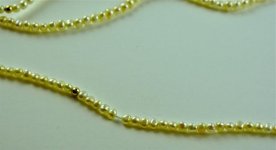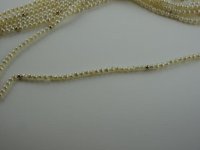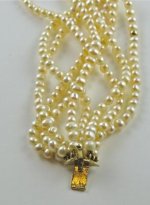Thank you Lisa,
Acting as a translator here: Fuji says that in significant quantity Biwa pearls were not harvested before the mid 1960's
For many years after their first harvest in Lake Biwa there was no need to develop a market (or to attempt to sell them to the west) because people from the Middle East (who as a culture were very familiar with natural pearls and their baroque shapes) were flush with OPEC money and didn't ask questions but snatched them up as fast as they were harvested.
Originally production in Lake Biwa started with in-body nucleation (with shell bead nucleus, technology borrowed from Japanese Ocean pearl production) and as a sort of after thought they made pearls in the mantle with out a shell bead nucleus.. the only reason they went into production of nucleus free cultivated pearls was the presence of a market of people who wanted to believe they were natural pearls.
Meanwhile in China they started with no nucleus pearls because they did not have the technology to use beads to start their pearls and because mantle cultivation is so much easier. It is only in this decade that they have gotten significantly into bead nucleation.
Fuji says he doesn't recall ever seeing any Lake Biwa pearls as small as 2.5mm , that most of them were 3.5-4mm and up. Even today most of the 2mm and below pearls that you can buy are probably natural pearls collected from mature mussels that are harvested for their shells. It is not really cost effective to cultivate pearls that small.. if even possible.
Yes Biwa pearls can be as "plump" as Helen's pearls.. the "plumpness" of fresh water pearls depends on them being from the first or second harvest.
Fuji , hems and haws at this one: He doesn't recall there being much difference in the quality, but that the major issue was quantity of pearls getting to market as the pollution was killing so many mussels. He is not aware of visible any markings from after pollution became rampant.
Sorry Lisa, I do not have those photos of the strands of Lake Biwa pearls on this computer.. but I will try to remember to find them and re post them. I will also try to take some better photos when I am in Hong Kong in June/July.
Picking Fuji's brain is fun.. thanks for the inspiration!
Hope you are all enjoying the weekend!
Cheers, Sarah

